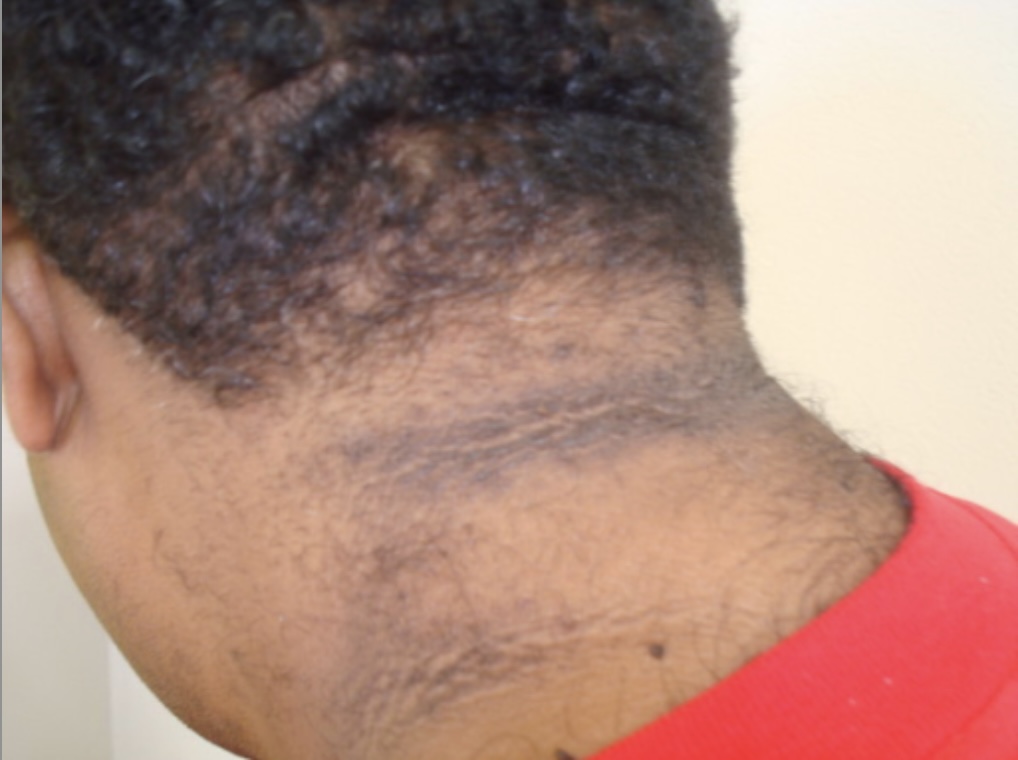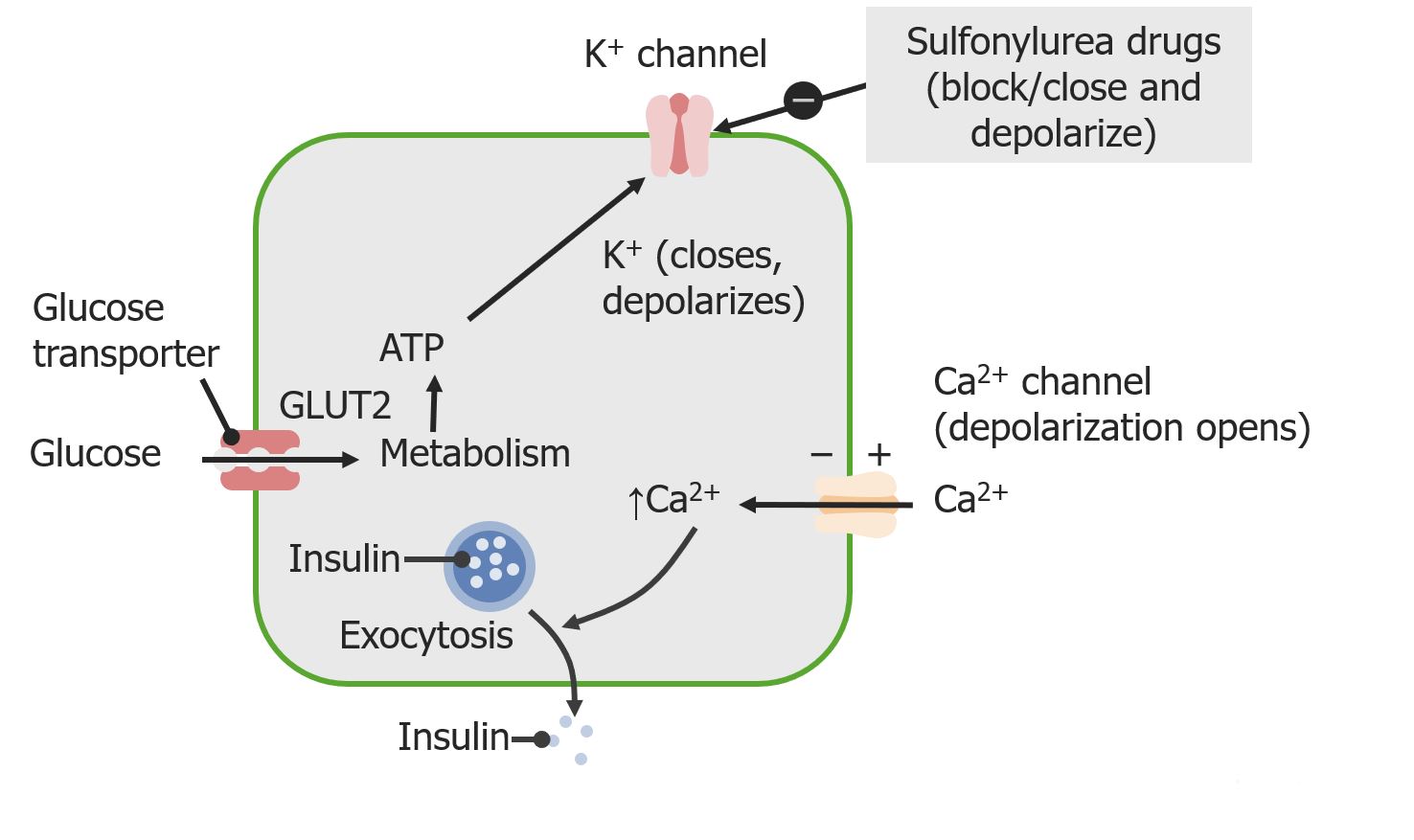Playlist
Show Playlist
Hide Playlist
Diabetic Neuropathy: Autonomic Neuropathy – Diabetes Complications
-
Slides AcuteChronicDiabetesComplications EndocrinePathology.pdf
-
Reference List Pathology.pdf
-
Download Lecture Overview
00:01 Let’s go to the third N, other complications of diabetes mellitus. 00:05 This then brings us to neuropathy. 00:08 Couple of things that you want to keep in mind. 00:12 The neuropathy along with the peripheral vascular disease, meaning to say microangiopathy, so things that you want to pay attention to for sure before you address any type of attending or patient or board is, is there diabetic retinopathy manifesting, is there diabetic nephropathy taking place, diabetic neuropathy and diabetic microangiopathy? Put these together, the neuropathy and microangiopathy, put them together and the reason for that is, let’s say what areas of the body are you always worried about or what concerns you with a diabetic? It is the decubitus areas, isn’t it? The decubitus areas, meaning to say the areas of the body where the patient is quite dependent maybe, well, well, I am doing quite a bit of standing. 01:04 So, therefore, my dependent area would be my… the soles of my feet, the bottom of my feet. 01:10 If there is a diabetic who is undergoing surgery, then please understand that if your patient is bedridden, that the dependent areas in that patient would be maybe perhaps the back of that patient, right, or maybe the buttocks. 01:24 Are we clear? In those areas because the dependent already dependent, meaning to say that you are-you are causing stress because of sheer gravity that there might be decreased blood supply along with that in the diabetic patient, there is decreased blood supply due to peripheral vascular disease. 01:41 Now, when there is decrease of blood supply taking place to that area in the skin, hmm, what may then happen? Necrosis is setting in, wow, and can the patient feel the pain? No. 01:56 Why? Because of neuropathy, the nerves have been damaged. 02:00 With all that said, let’s take a look. 02:03 Can be generalized focal or part of autonomic, which we will get into in a second. 02:09 Chronic sensorimotor distal symmetric polyneuropathy, what that basically means is that the both distal extremities could be affected symmetrically. 02:19 Polyneuropathy, many nerves could undergo damage. 02:23 Most common, often asymptomatic, increased risk of foot ulcer, the dependent area, often treated with antidepressants, tricyclics and SSRIs. 02:36 They seem to have some type of, perhaps if any preservation of your nerves at times you have learned that some of these antidepressants could actually work; not that the patient is depressed, it is a fact that you are using it because you want to try to revive or preserve some of that nerve functioning. 02:56 So, what may then happen if with the worse case scenario, if you are worried about not feeling the pain ulcers, at some point may then become gangrenous and your next step of management is you are left with no choice but to amputate. 03:14 Continue discussing neuropathy. 03:15 Now, we’ll take a look at autonomic neuropathy. 03:17 Why does this become important, hmm? Your patient has coronary arterial disease with diabetes, arterial disease, arterial. 03:27 If it is the artery, then what kind of damage is taking place in your blood vessel in diabetes? Arthrosclerosis. 03:33 So, now, I want you to go ahead and think about the left anterior descending artery or coronary artery which has undergone massive arthrosclerosis. 03:43 It is getting bigger and bigger and bigger, this atheroma is, and as a dose, so you are going from stable to unstable angina and, oh my goodness, the patient has elevated levels of troponin I. Patient comes in and says, “Doc, I am not feeling too well, get really, really tired and fatigued, I can’t even… can’t even really walk too much without feeling really tired and this concerns me.” Anything else? “No, not really.” You find troponin I’s to be elevated. 04:18 Next, you end up finding ST elevations in V1 through V4. 04:24 Wow, this-this seems an awful lot like myocardial infarction, but the patient is saying there is no chest pain. 04:31 There is no radiation of the pain up into the jaw and into the shoulder. 04:35 What is going on? A silent myocardial infarction, hmm, a silent myocardial infarction. 04:44 So, with diabetic neuropathy, the fact that if it is a cardiovascular system, what should normally be feeling the pain and such is not occurring. 04:52 Keep that in mind. 04:54 Next, orthostatic hypotension, autonomic nervous system, the cardiovascular system, you are going from supine to erect position; I will first walk you through the physio. 05:06 Supine sleeping to erect position, maybe suddenly sitting up or perhaps even standing up suddenly, all the blood then rushes down to the lower extremities. 05:16 You with me? With that blood dropping down to lower extremity, you can expect that the blood pressure or the profusion through the carotids and the aortic arch is not as it what it-what it should be because it’s now moved to the gravitational dependent areas, right? Who senses this in the carotids especially? In the carotid sinus baroreceptors sense this. 05:38 Do you remember now? Let me ask you anatomically. 05:41 The carotid sinus communicates with the medulla through which cranial nerve? Good, why did I-why did I pick the carotid sinus? Because that of the two locations of baroreceptor, meaning to say either carotid sinus, aortic arch, the carotid sinus becomes much, much, much, much more sensitive and it communicates efferently with the sympathetic nervous system or with the autonomic nervous system via glossopharyngeal, right, 9th cranial nerve. 06:10 Next, what should happen? You should have sympathetic outflow so that you can then preserve or restore the blood pressure vasoconstrict so that you can then have proper preservation of your blood pressure. 06:24 That isn’t happening. 06:25 Here, autonomic nervous system has been knocked out, why? Because of neuropathy, why? Because of diabetes mellitus. 06:31 So, therefore, from going from supine to erect position, you remain hypotensive, this is called orthostatic hypotension. 06:42 High mortality, you are worried. 06:45 Move on, the gastrointestinal system, you have heard of the enteric nervous system, you have heard of resting digest, you have heard of parasympathetic nervous system responsible for proper movement. 06:57 Those are part of nerves, aren’t they? They are all nerves and so, therefore, if you don’t have proper vagal stimuli of the stomach then you don’t have proper propulsion, you don’t have proper peristalsis. 07:10 So, therefore, the stomach becomes paralyzed, what do we call this? Gastroparalysis or gastroparesis. 07:20 So, what is your next step of management? You want to obviously facilitate the emptying of the stomach, so you are going to use prokinetic drugs including metoclopramide. 07:29 In the GI, we talked about, what about the genitourinary? Once again, you need proper nerve conduction in a male to the penis, you need to make sure that you have proper erection, ejaculation, emission. 07:47 All of that is going to be responsible by whom? Autonomic nervous system. 07:51 You can expect there to be erectile dysfunction, retrograde ejaculation, and from the bladder, you have dysfunction. 08:01 You need the parasympathetic so that you contract the detrusor muscle, relax your sphincter so that you can then allow for urination, that may all be disrupted when you have diabetic neuropathy. 08:13 Welcome to autonomic neuropathy with diabetes. 08:18 This is a picture in which we have the dependent area of a- of the foot symmetrically, we call this stocking glove, stocking glove type of issue in which along with peripheral vascular disease in which there is decrease of blood supply to the lower extremity, the dependent area resulting in erosion, necrosis, ulceration and worst case scenario, there might be gangrene. 08:43 You ask the patient did you feel the pain or do you feel any pain? No. 08:50 Diabetic neuropathy, extremely important, make sure that you always check the dependent areas in a patient with diabetes. 08:57 Chances are pretty good that you are going to end up finding an ulcer and when you do so, you do everything in power to properly address it, bandage it and you clean it up constantly, you do not just let it go because otherwise it will get infected, there isn’t proper blood supply, you can’t deliver, there will be seasons such to clean up the debris, that is not good, this is not good. 09:24 Cardiovascular disease and diabetes, arthrosclerosis, these are the arteries. 09:28 Take a look at the mortality, 80 percent, coronary arterial disease, myocardial infarction, cerebral vascular… cerebral vascular disease, stroke, peripheral vascular disease, you have heard of claudication and worst case scenario, I just walked you through ulcers and gangrene. 09:45 Myocardial ischemia may be silent, why is that? I gave you a patient who walked in and she told you that feeling really tired and fatigued, you find troponin I, but there was no chest pain, silent myocardial infarction due to diabetic neuropathy. 10:00 Peripheral arterial disease may result in claudication and what does that mean to you? It means that there is pain in the lower legs or the thighs because of decrease of blood supply so kind of think of this as being angina of your leg, non healing ulcers. 10:20 Once again, all part of peripheral arterial disease because you don’t have proper blood supply to the tissue. 10:27 Annual screening for sure for hyperlipidemia and hypertension, you need to be aggressive. 10:33 Remember that the goal for blood pressure is keep it less than 130/80, that’s ideal. 10:38 Now, obviously that is not going to be practical in many instances, but that is your ideal goal. 10:45 Your LDL goal, you want this to be less than 100. 10:48 In a diabetic, you need to be extremely, extremely aggressive. 10:52 LDL contains cholesterol, you want that to be decreased.
About the Lecture
The lecture Diabetic Neuropathy: Autonomic Neuropathy – Diabetes Complications by Carlo Raj, MD is from the course Pancreatic Disease and Diabetes.
Included Quiz Questions
Which statement regarding diabetic neuropathy is FALSE?
- It is often treated with antipsychotics.
- It is the most common diabetic complication.
- It is often asymptomatic.
- It increases the chance of foot ulcers.
- It is likely to occur in decubital areas.
What is a manifestation of autonomic neuropathy in the cardiovascular system?
- Resting tachycardia
- Increased systolic blood pressure
- Holosystolic murmur
- Malignant hypertension
- Increased cardiac output
What cardiovascular outcome are diabetic patients at a higher risk of experiencing?
- Myocardial infarction without classic symptoms
- Aortic valve stenosis
- Right heart failure
- Wolf-Parkinson-White syndrome
- Atrial fibrillation
Gastroparesis is caused mainly by neuropathy in which nerve?
- Vagus nerve
- Glossopharyngeal nerve
- Lesser splanchnic nerve
- CN IX
- CN XII
Customer reviews
5,0 of 5 stars
| 5 Stars |
|
5 |
| 4 Stars |
|
0 |
| 3 Stars |
|
0 |
| 2 Stars |
|
0 |
| 1 Star |
|
0 |






